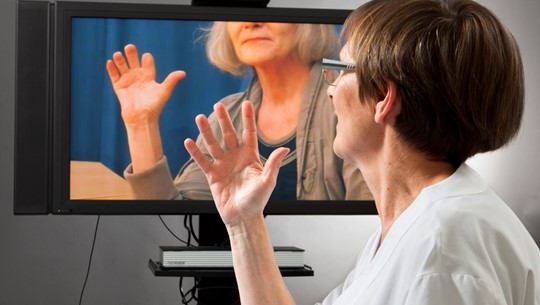Patients in need of rehabilitation after injuries or surgical procedures in the hand or arm are offered treatment via video in their home or at the nearest healthcare center. The rehabilitation consists of investigation, intervention and evaluation. Patients in need of assistance, or those lacking access to required technology, participate using the videoconferencing system at the nearest primary healthcare facility.
The procedure is routine since 2009 and about 10 percent of the patients who are rehabilitated at the clinic receive at least parts of their rehabilitation remotely via video. The rehabilitation team also monitors initiated treatments and provides consultancy support to colleagues at healthcare centers and hospitals.
Some of the highlighted benefits are that an equal rehabilitation can be offered to the county's and the region's patients regardless of their place of residence, and that the patients are given greater opportunity to fit rehabilitation into their everyday life. Environmental benefits and reduction in costs for travel and overnight stays are other important outcomes of this work model.
Patients in need of rehabilitation after injuries or surgical procedures in the hand or arm, Occupational therapists, physiotherapists and doctors at the Hand and plastic surgery clinic at the Univesity Hospital of Umeå as well as Occupational therapists and physiotherapists at healthcare centers.
 Distance treatment
Counseling via online tools with associated treatment or own treatment.
Distance treatment
Counseling via online tools with associated treatment or own treatment.
 Distance monitoring
Social care remotely with sensors, cameras, reminders and data collection.
Distance monitoring
Social care remotely with sensors, cameras, reminders and data collection.
 Distance meetings
Close care concepts that move the point of healthcare closer or into the citizens' own homes.
Distance meetings
Close care concepts that move the point of healthcare closer or into the citizens' own homes.
 New distance-spanning solutions
New innovative solutions, new national infrastructure for digital services and service models where citizens can take greater responsibility.
New distance-spanning solutions
New innovative solutions, new national infrastructure for digital services and service models where citizens can take greater responsibility.
 Show all solutions
Show solutions from all four categories
Show all solutions
Show solutions from all four categories
